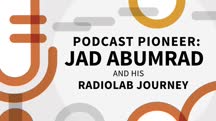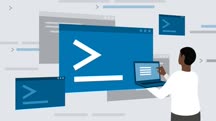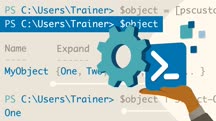Course catalog
Categories
Showing 1,081-1,100 of 1,450 items.
PHP: Creating Secure Websites (229276)
Hackers target PHP web applications more often than other sites because most PHP code is written by developers with little security experience. Protecting web applications from these attacks has become an essential skill for all PHP developers. PHP: Creating Secure Websites shows you how to meet the most important security challenges when developing websites with PHP. Instructor Kevin Skoglund covers the techniques and PHP code needed to develop sites that are more secure, and to avoid common mistakes. Learn how to configure PHP properly and filter input and escape output. Then check out step-by-step defenses against the most common forms of attack, including cross-site scripting and SQL injection.
PHP: User Authentication (233832)
Do you need to know how to apply best practices for user authentication in PHP? This course walks you through a series of best practices that you can apply to your own PHP projects to avoid costly security pitfalls. Instructor Kevin Skoglund gives you an overview of user authentication in PHP, then dives into how you can implement it. He steps through creating the database table, adding new users, logging users in and out, and controlling access to pages and functions. Kevin shows you how to work with strong passwords, prevent weak ones, and reset forgotten ones. He shows you how to secure user authentication by preventing insecure direct object references (IDOR), using HTTPS, protecting access tokens, and keeping track of logins. Kevin concludes with a challenge/solution set exploring how to write PHP code that expires a user login after a set amount of time has passed.
Planning a Microsoft Cloud Solution (220606)
If you're planning on moving your organization to the cloud, Azure—the popular cloud services platform from Microsoft—is worth a look. In this course, Sharon Bennett provides a thorough introduction to cloud computing, focusing on the various Azure technologies designed to help support and protect your company as it scales. Sharon explains how to build a base of operations with Azure resource groups, virtual networking, and storage—the foundations of your infrastructure—and ensure business continuity using out-of-the-box Azure Backup and Azure Site Recovery services. She covers how to set up virtual machines and manage users and access with Azure Active Directory. This introduction is a perfect primer for IT pros who want to move clients to the cloud, and business owners who are looking for more efficient alternatives to a traditional IT infrastructure.
Planning Basics in SAP (233101)
Planning and logistics are essential functions within every organization. This course from Michael Management gives you a high-level overview of the logistical planning functions in SAP. The course explains the basics of forecasts and demand planning, then goes into supply and demand. This course introduces you to the benefits of MRP (material requirements planning) and RPP (reorder point planning). The course concludes with SAP demos that walk you through practical applications of the concepts that were introduced.
Note: This course was created by Michael Management. We are pleased to host this training in our library.
Note: This course was created by Michael Management. We are pleased to host this training in our library.
Planning for the Remote-First, Work-from-Anywhere Organization (232863)
Remote work is here to stay. To recruit and retain top talent—and build a more diverse, efficient, and inclusive organization—leaders must embrace a remote-first culture. In this course, instructor Chris Herd details why and how companies can develop the ability to operate in this way. Learn how a shift to remote work can lead to happier and healthier organizations and employees. Get insights into different remote-first models, including asynchronous work, and learn about key tools that can help your teams communicate and collaborate efficiently from anywhere. Plus, Chris outlines the key challenges of going remote, so that you can sidestep these common mistakes in your own transformation.
Planning Your No-Code Website (224533)
Making your own website may be easier than ever before, with the amount of services, sites, and tools at your disposal, but all those options and choices may lead to decision paralysis. What domain do you pick? What hosting service do you use? How do you design the site to match your brand? Let longtime LinkedIn Learning instructor Jen Kramer show you the way. In this course, Jen covers the important decisions to be made in the no-code website realm, from the first decisions, to building the site, to maintaining the site after creation. She covers factors to consider when making personal aesthetic choices such as fonts, tone, and imagery, as well as technical aspects like choosing a platform, optimizing images for the web, and improving website performance. If you have an idea or brand you want to promote with a website, this course will give you the tools to help you get up and running.
PLC: Industrial Sensors (218260)
Industrial control systems cannot—unlike humans—see, hear, and monitor processes by themselves. Instead, they use industrial sensors to convert mechanical, magnetic, thermal, optical, and chemical variations into electric voltages and currents. In this course, Zahraa Khalil covers the most common types of industrial sensors used within the field of industrial automation. She looks at proximity, temperature, pressure, and level sensors, and explores the operating principles and common applications of each. If you’ve got the basics of programmable logic controllers (PLCs) programming down and want to see what you can do with industrial sensors, join Zahraa in this course.
Podcast Pioneer: Jad Abumrad and His Radiolab Journey (225672)
Host and co-creator of Radiolab, More Perfect, Dolly Parton’s America, and more, Jad Abumrad has inspired the sounds of thousands of podcasts and radio shows around the world (Kerning Cultures Network shows included). In this course, adapted from the podcast al empire, Hebah Fisher talks with Jad about his career as a storyteller and student of curiosity. Jad describes childhood influences and what it is to straddle the line between being Lebanese and being American. He discusses what led him to be a storyteller, then goes into his first successful pitch to NPR and the beginnings of Radiolab. Jad talks about receiving the MacArthur “Genius” Grant and his plans to continue Radiolab. He concludes with what guides his curiosity and how he avoids burning out.
Note: This course was created by al empire. We are pleased to host this training in our library.
Note: This course was created by al empire. We are pleased to host this training in our library.
Podcasting for Enterprises (216356)
Are you wondering how a podcast can benefit your organization? Could you use it for marketing? What about PR and corporate communications, or even talent development? How can you make your podcast secure? Instructor Danny Ozment answers these questions and more, in this course. Danny explains several important reasons why podcasts work, such as building thought leadership and establishing evergreen content. He goes into some podcast uses that are specific to enterprise podcasting, like how you can use podcasts for internal training and for conveying messages and statements from organization leaders, then concludes with practical advice on developing a plan for your enterprise podcast.
PostgreSQL: Advanced Queries (218379)
In this course, database expert Adam Wilbert introduces you to a number of advanced query techniques that you can use to better understand your data. Statistical analyses involve understanding the shape and size of the full data set, and deeper insights can be gained by grouping data together to obtain some very useful metrics. Adam shows you how to create basic groups and apply aggregate calculations, then moves into window functions that create subgroups for more granular analysis. He goes over statistics that are based on sorted data within groups, such as the median value, the first and third quartiles of a dataset, the most frequent value, and more. Adam also covers ranking, hypothetical sets, percentile functions, and conditional expressions for further manipulating query result sets. He concludes with some additional querying techniques that you may find useful in solving common problems.
PostgreSQL: Client Applications (228817)
PostgreSQL is one of the most popular open-source database management systems. In this course, Adam Wilbert introduces you to the command line tools used in professional PostgreSQL database administration. These tools are used for remote management of the server and provide detailed insight into the configuration and operation of the server. Adam starts by locating or installing the tools, then explores the operation of the main utility, psql. Psql provides a wide array of configurable options that can be combined to create flexible workflows for sending SQL commands to the server, or for exporting query results to external files. Adam finishes the course with a detailed look at the command line utilities used to create and restore database backups.
Power BI Data Visualization and Dashboard Tips, Tricks, & Techniques (210474)
Power BI is a software that lets users visualize and report data flexibly and share it in a number of ways. It is rapidly gaining market share, as it is affordable and well-integrated with other Microsoft tools. In this course, instructor Emma Saunders shows you how you can use Power BI to create reports and visualizations with flair and share them easily with colleagues. Emma explains the Power BI app (desktop) and service (web browser). She takes you through a sample report to show how it’s built, then goes over how and why to design and structure a report, including how to structure tabs, how many visuals to put on a page, and how to draw attention to one visual over another. Emma covers more advanced visuals, as well, including statistical diagrams and maps for geographic data. She walks you through how to design reports like a pro in the Power BI service, from basic layouts to choosing specific themes and fonts.
Power BI Mistakes to Avoid (209471)
As a data expert using Microsoft Power BI, your goal is to always be growing your skills. In this course, instructor John David Ariansen helps grow your skills by learning mistakes to avoid. First, John introduces you to a few challenges of Power BI. He shows you how to become a systems thinker, improve your analysis skills, and use visualization effectively. He emphasizes the importance of pulling in the right amount of data, eliminating extra steps, profiling your data sources, and removing unnecessary data. John teaches you how to use lookup tables and a star schema. Then he goes over why you need to eliminate two-way relationships when modeling and what you should do instead. He discusses creating visualizations from time series data and how to use groups, slicers, and custom tooltips effectively. He steps you through conducting a Top-N analysis, then concludes by explaining how to use the right amount of color.
This course was created by Madecraft. We are pleased to host this training in our library.

This course was created by Madecraft. We are pleased to host this training in our library.

Power BI: Integrating AI and Machine Learning (218991)
Power BI is a powerful data analytics and visualization tool that allows business users to monitor data, analyze trends, and make decisions. Every month, Microsoft pushes Power BI updates out to the end users, and the growth of Power BI is a key part of Microsoft’s current strategy. This course showcases existing AI and machine learning capabilities available directly in accessible Power BI functionalities. Data analytics and business analysis expert Helen Wall gives you a useful overview of Power BI, then dives into the steps to configure Power Query and your data model. Helen steps through analyzing single variables and shows you the tools and techniques to measure relationships between variables. She shows you visuals that you can use to pose and answer questions in Power BI, explains useful techniques to enhance your analysis of time series data, and walks you through some best practices for sharing your analysis.
PowerPoint 2021 Essential Training (Office 2021/LTSC) (215370)
Almost every presentation is more impactful with graphics, animations, or just simple pictures. Visual presentations simply leave a bigger impression than words alone. And while most people who give presentations might not have a background in design or any visual-related field, with PowerPoint, you don’t need to be a designer to create great-looking presentations. In this course, George Maestri shows you the tools you need to create, edit, and share compelling and highly-visual presentations. He gets into all the basics that modern presentations should consider, like layouts and colors, text and tables, images and graphics, and animations and videos. George also covers organizing your slides so they look professional and clear. Lastly, he gives tips on how to deliver your presentations, from adding speaker notes that only you can see, to automating a presentation and ways to present on multiple screens, to methods for sharing your presentation for the audience to reference or distribute later.
PowerPoint Quick Tips (209590)
Enhance your PowerPoint abilities—and get on-the-spot solutions to common questions—with this collection of quick, bite-sized tutorials. Each video is self-contained and about one to two minutes in length, making it easy for you to squeeze in a few learning opportunities throughout your workday. Instructors Jess Stratton, Garrick Chow, and Nick Brazzi share tips and tricks that can help you work smarter with this popular presentation platform. Learn how to add a watermark to slides, turn your presentation into a video, add transitions and animations, create PowerPoint templates, and much more.
PowerPoint: Eight Easy Ways to Make Your Presentation Stand Out (217546)
Making your PowerPoint slides more polished and engaging is easier than you think. In this short course, presentation guru Jole Simmons shares some helpful tricks to take your PowerPoint game to a new level. First, Jole teaches how to take both the presenter and the audience into account in your design approach. Next, learn to identify the main points of the story you’re trying to tell in PowerPoint. Find out how to go the extra mile in making design calls. Explore some ways to convey your information without forcing everybody to read what's on the slide. Learn how to break information into threes, for better learning retention. Jole also discusses how to make sure your presentation is inclusive and geared towards a variety of people. Then, discover ways to add life to your slides with a well-placed surprise. Jole explains continuity, flow, and how to bring it all together.
PowerShell 7 Essential Training (221286)
PowerShell is a great tool for managing core infrastructure, general server and client administration, specific Windows services, and even elements of Azure. Jump-start your career and your IT environment by learning to use the latest version, PowerShell 7. Instructor Liam Cleary shows you how to ensure you’re using the administrator option in PowerShell, how to modify the PowerShell console, and how to choose a development environment. He introduces new features in PowerShell 7 and walks you through how to use PowerShell modules. Liam explains how to choose and execute commands, how to use variables, and how to create and manage objects. He steps you through how to enable the execution of scripts, how to create a reusable script, and how to create parameters. Liam covers different commands to use and how to execute them, then goes into when to use JavaScript Object Notation (JSON) and how to import it. In conclusion, he discusses when to use remoting and the implications of doing so.
Practical Influencing Techniques (216594)
Influencing is happening in every meeting you have. Other people are influencing you, and you are influencing them. It's a vital life skill. In this course, instructor Chris Croft brings an engineer's mind to the subject. Chris presents a six-step process that you can follow in any influencing situation, with techniques that you can use at each stage, depending on the type of person you would like to influence. He explains how you can use this process to prepare for meetings and get the best from every relationship, whether at work or at home, with customers, bosses, suppliers, friends, or relatives. Chris goes over the ethics of influencing, as well. Understanding the psychology of influencing helps you to build better relationships and get better outcomes with everyone you meet.
Note: This course was created by Chris Croft. We are pleased to host this training in our library.
Note: This course was created by Chris Croft. We are pleased to host this training in our library.
Predictive Analytics Essential Training: Data Mining (218175)
Are you a data science practitioner, looking to develop or enhance your skills in predictive analysis and data mining? This course provides several “big picture” insights, via instructor Keith McCormick, a veteran practitioner who has completed dozens of real-world projects. Keith begins by introducing you to key definitions and processes that you will need to complete the course successfully. He steps you through defining the problem you need your predictive analysis to address, then focuses on how to make sure you meet the data requirements and how good data preparation improves your data mining projects. Keith dives into the skill sets and resources that you need and the problems you will face. Then he goes over the steps to find the solution and put it to work with probabilities, propensities, missing data, meta modeling, and much more. Keith finishes up with detailed explanations of CRISP-DM and Tom Khabaza’s nine laws of data mining, plus Tom’s new 10th law.



















